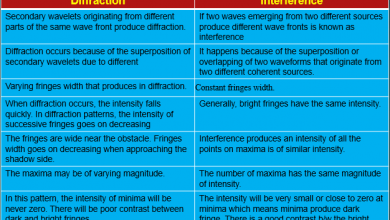Key Difference Between Concave and Convex Mirror With Definition
Concave and convex mirrors are two out of three types mirror. The significant difference between concave and convex mirrors is that a concave mirror possesses a cave-like structure as its surface is curved in an inward direction. As against, a convex mirror has an outward bulged structure as its reflecting surface. Due to structural variation, concave and convex mirrors possess differences in the properties displayed by them.
Types of spherical Mirror
- Concave Mirror : Concave mirrors are converging mirrors. the rays reflect and meet at a certain point known as the focal point.
- Spherical mirror whose inner side is reflecting are called concave mirror’
- it’s focus and Centre of curvature line in front of the motor.
- The image formed by a concave mirror can be both virtual and erect, depending upon the position of an object.
- The magnification produced by a concave mirror can be less than, equal to or greater than.
1. Convex Mirror : Convex mirrors are diverging mirrors. The same point reflects off and moves in a different direction.
- Spherical mirror whose outer side is reflecting are called convex mirror.
- it’s focus and Centre of curvature line behind the mirror.
- Image formed by a convex mirror is always virtual.
- The magnification produced by a concave mirror can be less than.
What are Mirrors?
Mirrors are regarded as reflective surfaces from where the falling light from the object gets bounced off thereby producing real or virtual images. A ray of light is unable to pass through a mirror.
Comparison
| Basis for Comparison | Convex Mirror | Concave Mirror |
| Also called | Converging mirror | Diverging mirror |
| Reflecting surface | Real and inverter or virtual and erect | Always virtual and erect |
| Focus and Centre of curvature | In Front mirror | Behind the mirror |
| Projection | Can be done on the screen | Cannot be done on the screen |
| Focal length | Positive | Negative |
How is The Image Formed by a Concave and Convex Mirror?
Image Formation by Concave Mirror: By changing the position of the object from the concave mirror, different types of images can be formed. Various types of images are produced when the object is placed:
-
At the infinity
-
Beyond the Centre of curvature
-
At the Centre of curvature
-
Between the Centre of curvature and principal focus
-
At the principal focus
-
Between the principal focus and pole
Image Formation by Convex Mirror: An image which is formed by a convex mirror is always erect and virtual, whatever be the point of the object. Here, let us look at the types of images formed by a convex mirror.
-
When an object is pointed at infinity, a virtual image is formed at the focus. The size of the image is much smaller as compared to that of the object.
-
When an object is placed at a finite distance from the mirror, a virtual image is formed between the pole and focus of the convex mirror. The size of the image is smaller as compared to that of the object.
Which Type of Image is Formed by a Convex Mirror?
Plane mirrors and convex mirrors only produce virtual images. Only a concave mirror is capable of creating a real image and this only occurs if the object is situated at a greater distance than the focal length of the mirror’s surface.
The image formed in a convex mirror is always virtual and erect, whatever be the position of the object. In this section, let us look at the types of images formed by a convex mirror. When an object is located at infinity, a virtual image is created at the focus point.
Difference Between Concave And Convex Mirror
- The concave mirror is also known as the converging mirror, having a reflecting surface that is away from the incident rays.
- The other hand, a convex mirror is called a diverging mirror. In this mirror, the light is reflected outwardly.
Related :
- What are The Phases of the Moon?
-
Difference Between Concave and Convex lens
- Curved Mirror
- Concave Lens
- Convex Lens
- Plan Mirror
